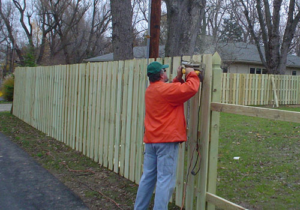If you have a piano that needs to be moved from one home to another, you need to use trained and professional piano movers. Trying to move this large and bulky item yourself can cause damage and put people at risk of injury.

Professional movers have experience maneuvering pianos in and out of doorways, corners, up stairs and more. They also know how to protect and secure the instrument during transit. Contact Mountain Piano Moving Company for professional help.
Professional piano movers are trained and experienced in handling heavy items, including pianos. They use specialized equipment like piano boards and dollies to move large, bulky items safely. They also know how to properly disassemble and reassemble pianos for transport. In addition, piano movers have a variety of tools to help them maneuver difficult spaces, such as narrow doorways and flights of stairs. They also have access to climate-controlled trucks, which can protect the instrument from damage during transportation.
Pianos are very delicate instruments that require special care during relocation. They are extremely heavy, and they have many moving parts that can be damaged if not handled properly. Many people try to save money by attempting to move their own pianos, but this can be dangerous for them and their property. Injuries from trying to move a piano can include back injuries, shoulder socket injury, and hip fractures. These injuries may cause a great deal of pain and suffering, not to mention lost wages and medical bills.
It is important to hire a moving company with adequate insurance coverage and up-to-date licensing. They should also have a strong reputation in the industry and be highly recommended by previous customers. You should check the website of any potential piano movers for customer reviews and references.
Before the actual move, a professional piano mover will carefully plan the entire route and remove any obstacles from the way. They will measure every doorway, staircase, and hallway to ensure that the piano will fit through each passage. They will also protect the floors of your home by laying down blankets and thick padding. This will minimize the risk of damage to your flooring from scrapes and dents during transit.
Piano movers will then securely load the instrument onto the truck. They will use ratchet straps to secure the piano in place and prevent shifting during transit. They will also carefully wrap the piano in blankets to reduce the chances of scratches and dents. Finally, they will drive the piano with caution and exercise patience during transport to avoid any sudden stops or sharp turns that could damage the piano.
Insurance
The cost of insurance is an important factor to consider when choosing a piano mover. You should look for a company that is fully insured and bonded, as this reflects their commitment to customer satisfaction and service. It is also a sign that they are invested in their work and will stand by it.
Fully-insured piano movers have the experience and expertise to handle your instrument safely. They use special cradles and dollies to ensure that your piano doesn’t get damaged during transportation. They will also make sure to wrap your piano in protective coverings and use proper lifting techniques to avoid injuries. This prevents scratches, dents, and other damage to the instrument.
While it is true that most household movers can move your piano, it is not always safe to do so. In fact, it is quite common for these movers to end up doing terrible damage to your piano and to whatever they happen to hit during the move. This is because household movers are not trained or equipped to handle the complexities of moving a piano, and they do not have the right equipment to do so.
Household movers are also not required to carry insurance, so it’s important to verify that your piano mover is insured. A reputable piano mover will have proof of insurance coverage on their website, and they will be willing to provide you with a copy of their policy if requested. Make sure to review the policy’s limits, deductibles, and other details before making your decision.
Insurance policies for piano movers can vary significantly, so it’s important to compare the offerings of different companies to find one that meets your specific needs. For example, some companies offer basic coverage that includes a set amount per pound of your piano’s weight, while others may offer more comprehensive protection for the full value of your piano. If you’re not happy with the coverage options offered by a particular company, you can try to negotiate additional coverage from a third-party provider.
When selecting an insurance plan for your piano move, make sure it covers all aspects of the transportation process, including loading, unloading, transporting, and storage. Some plans also cover damages to other property caused by the mover, as well as liability coverage for injuries or accidents that occur during transport.
Time
The process of moving a piano can be a very time-consuming and difficult task, especially when done without professional assistance. It requires specialized equipment and the expertise of a team to move it safely. However, with the right preparation, it can be done quickly and efficiently. Here are some tips to help you save time and money during your next move:
First, be sure that the piano movers you hire have experience with this type of work. Look for a reputable company with an excellent reputation and positive customer reviews. Moreover, look for a company that offers a binding estimate for the cost of the service. This will prevent you from having to pay unexpected costs later on.
Next, prepare the piano for moving by clearing out a path through the home and removing any detachable parts. Also, clear the path outside your home and inform the movers about any potential challenges that may arise during the move, such as stairs or narrow passages. This will help ensure that the movers have an easy time during the move and minimize the risk of damage.
Finally, make sure to get a quote in writing from the piano movers before hiring them for your move. It will give you a better idea of their rates and services, and it will also help you compare pricing options. The best movers will provide detailed quotes and be upfront about their pricing and insurance coverage. In addition, a good piano mover will offer you a binding estimate that won’t change unless the scope of the job changes significantly.
Moving a piano is a complex, dangerous, and time-consuming process. If you try to do it yourself, you might cause permanent damage to the instrument and your house. Instead, it’s more cost-effective to hire a professional mover. They can take care of the heavy lifting and transport your piano to your new home safely and quickly. They’ll also ensure that your furniture is protected during the move. This will give you peace of mind and allow you to focus on other aspects of your move.
Cost
Moving a piano requires more than just a few boxes and a truck. It is a complex task that requires professional expertise and the right equipment. The cost of hiring piano movers can vary depending on the type and size of piano, the distance of the move, and other factors. For example, larger pianos are more expensive to move than smaller ones. It also takes more time to move a large piano than a smaller one.
Before the actual move, a piano mover will conduct an assessment of your home or office to determine the best route and the equipment needed for the job. They will look for any obstacles such as stairs or narrow doorways that may complicate the move. This helps them plan ahead and avoid costly surprises during the move.
Typically, piano movers will charge for the basic labor costs. This includes two or more movers and the use of equipment such as trolleys, skid boards, and ramps. The movers will also provide padding to protect your instrument from damage during transportation. The cost of this padding varies from company to company, but it is worth the investment. If your piano is going to be transported a long distance, the movers will also need to rent a truck and provide fuel.
Other factors that influence the cost of piano movers include the type and location of your home or office. Grand pianos are more expensive to move than upright pianos, as they are heavier and require special handling. Additionally, if your piano needs to be moved up or down stairs, there will be an additional fee for these services.
Another factor that affects the cost of piano movers is their experience. If the movers have extensive experience with different types of pianos, they will be able to move them more efficiently. This will reduce the risk of damage and ensure that your piano is delivered in good condition.
Piano movers should be paid for their hard work and effort. Although it is not mandatory, tipping them can be a nice gesture. A $100 tip is usually appropriate for piano movers who have worked hard and taken the time to carefully move your piano.








